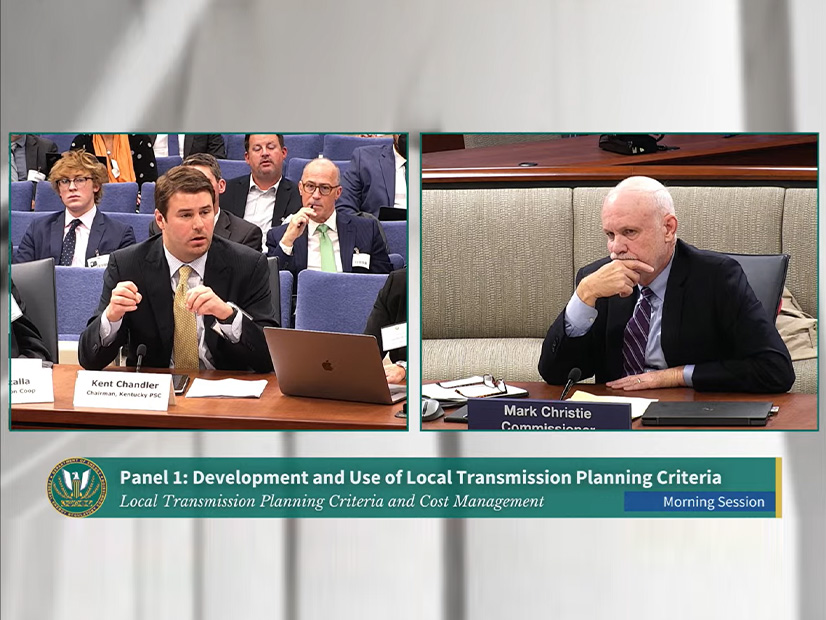
 Devin Hartman, R Street Institute | R Street Institute
Devin Hartman, R Street Institute | R Street InstituteBy Devin Hartman and Kent Chandler
For more than a year, FERC, state authorities and industry stakeholders have agonized over the performance of transmission planning. The most notable forums include the Joint Federal-State Task Force on Electric Transmission and FERC’s October 2022 technical conference.[1],[2] The only reform action to date has been a Notice of Proposed Rulemaking on regional transmission planning issued by FERC last April, with a final rule in sight for early-to-mid 2023.[3]
These processes have revealed troubling flaws in transmission federalism. Moving forward, three principles should guide transmission planning reform:
- Durability. Reforms must be legally and politically robust to secure a stable regulatory climate.
- Quality governance. Local and regional transmission planning are co-dependent, meaning they require synchronization between state and federal regulators with clear roles and responsibilities for each. Proper transmission planning also requires independent administration and monitoring.
- Sound economics. Planning should be proactive, incorporate all technological solutions, and maximize net benefits to consumers. Procurement should be competitively bid wherever possible and regulatory scrutiny should fill in gaps where competition is unworkable.
Current transmission planning does not embody these principles. The consequences are higher-than-necessary costs, stifled innovation, diminished reliability and prolific controversy. FERC Commissioner Mark Christie recently observed that transmission capital expenses have nearly tripled between 2012 and 2020.[4] Feeling this pain, dozens of consumer groups have called for better governance, planning and competitive procurement.[5]
Repairing Current Frameworks
The economic disappointment and extensive controversies surrounding transmission development should come as no surprise: They directly reflect the institutions and policies underlying transmission planning and procurement. FERC Orders 890 and 1000 have good bones, but framework adjustments along with fixing key implementation flaws are paramount. For example, the same rules ostensibly exist regardless of regional transmission organization (RTO) membership, but two sets exist in practice — one in RTO regions and another outside them — creating untenable governance issues.
The current regional transmission framework is reactive, miscounts transmission benefits, excludes some technologies from consideration and plans economic and reliability projects in artificial silos. Astoundingly, a large proportion of transmission development is neither subject to competitive bidding nor economic regulation. Competitive exemptions are too frequent in RTO footprints, while competition is non-existent outside RTOs.
Where competition is absent, gaps in regulatory oversight remain pervasive. FERC’s formula rates for transmission, coupled with the presumption of prudence, is not economic regulation. Meanwhile, not many states have full authority to approve or review transmission projects, and even fewer state commissions play a meaningful role in the planning of transmission facilities.[6] Projects in the 100-230 kilovolt (kV) range, those creatively dubbed “reliability need,” or those within a single transmission zone, regardless of cost allocation, often fall between the cracks.
In Order 1000, FERC declined to remove a federal right of first refusal for local transmission, out of consideration for incumbent utilities’ retail “service obligation.” However, since Order 1000, billions of dollars of local transmission have been built by affiliates of incumbents, without having a service obligation themselves.[7] These projects are exempt from competition. State utility commissions have little-to-no jurisdiction over them. And their costs are often allocated across state lines.
Further, it is hardly fair to consider transmission between 100 and 230 kV “local” given the increasingly regional nature of those facilities. Between February 2020 and July 2022, the Kentucky Siting Board approved certificates for 20 merchant solar facilities, between 40 and 250 MWs), with an average size of more than 100 MW.[8] All of the projects propose to build or connect to transmission below 200 kV, and only one-fifth of the projects are being built to provide power to Kentucky utilities, while the rest will serve customers across the Tennessee Valley Authority, MISO and PJM footprints.
At above-market rates of return, it is no surprise that incumbent utilities have prioritized building out transmission where competition and regulatory oversight are virtually absent. In doing so, they typically pursue inefficient small projects in lieu of more efficient technologies and subvert the planning of more efficient alternatives at the regional level.[9] In some regions, the majority of transmission projects skirt competition and robust regulatory review, and the number is growing.[10]
Repairing all this requires governance and economic reforms to work in tandem, augmented by stakeholder buy-in. Three reform priorities are:
- Improve the Order 890 and 1000 frameworks. Equalize the application of Orders 890 and 1000 across RTO and non-RTO regions. All regional transmission should be independently planned. RTOs provide this function, but accomplishing this objective outside RTOs would require an independent transmission planner. Regional transmission planning must account for public policy effects on generation, including anticipated retirements based on plant economics, and not wait for deactivation notices to be submitted.
- Make regional transmission planning proactive and holistic with enhanced competition. Planning should reflect the multi-decade nature of the investment, incorporate commercially available technologies, and account for the full suite of economic and reliability benefits simultaneously, not in silos. Minimizing competitive exemptions is crucial, with options including stricter “reliability need” exemptions and lowering the voltage exemption threshold to 100 kV to comport with the standard definition of the bulk power system.[11] This would clarify for states the scrutiny that some projects undergo.
- Ensure economic oversight where competition is unworkable. Utility projects exempt from competition must face economic scrutiny from regulators, which warrants reexamining the policy of unconditional formula rate treatment under a presumption of prudence. Need and prudence are impossible to judge without information. State regulators note that an independent transmission monitor (ITM) could furnish such information and help close the regulatory gap with local transmission projects.[12] It could also help ensure Order 890 compliance.
Reform Agenda
Transmission reforms are as entangled as the bulk power system. Yet many reforms will be pursued through disparate procedural vehicles, which elevates coordination risk.
FERC’s first bite at the apple is its forthcoming final rule on transmission reform. The winning formula is for FERC to jettison the anti-competitive provisions of its proposed rule while refining the good ones, including the longer-term planning horizon, what advanced technologies to include in planning, holistic benefits accounting and breaking down silos between “economic” and “reliability” project planning.[13]
FERC will need to pursue the remaining reform agenda through separate proceedings. The October technical conference established a record upon which to prioritize governance improvements, including the role of independent monitoring and planning, as well as pathways to expand competition and close the regulatory gap for projects where competition is unworkable. This could spin off into any number of dockets. The trick will be connecting the dots.
Devin Hartman is director of energy and environmental policy for the R Street Institute.
Kent Chandler is the chairman of the Kentucky Public Service Commission.
[2] https://www.ferc.gov/news-events/events/technical-conference-transmission-planning-and-cost-management-10062022.
[3] https://www.ferc.gov/news-events/news/ferc-issues-transmission-nopr-addressing-planning-cost-allocation.
[4] https://www.marylandmatters.org/2022/11/29/as-utilities-spend-billions-on-transmission-support-builds-for-independent-monitoring.
[6] https://www.rtoinsider.com/articles/30933-ferc-tech-conference-highlights-regulatory-gaps-tx-oversight.
[7] See, e.g., https://www.fitchratings.com/research/corporate-finance/fitch-rates-aep-transmission-co-llc-senior-notes-a-07-06-2022.


